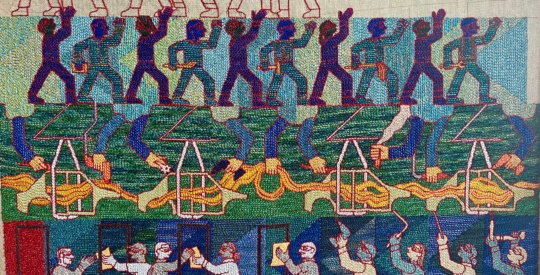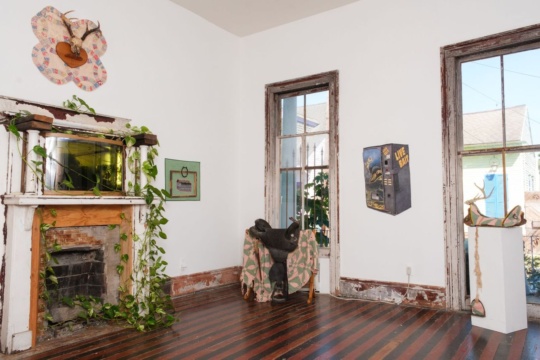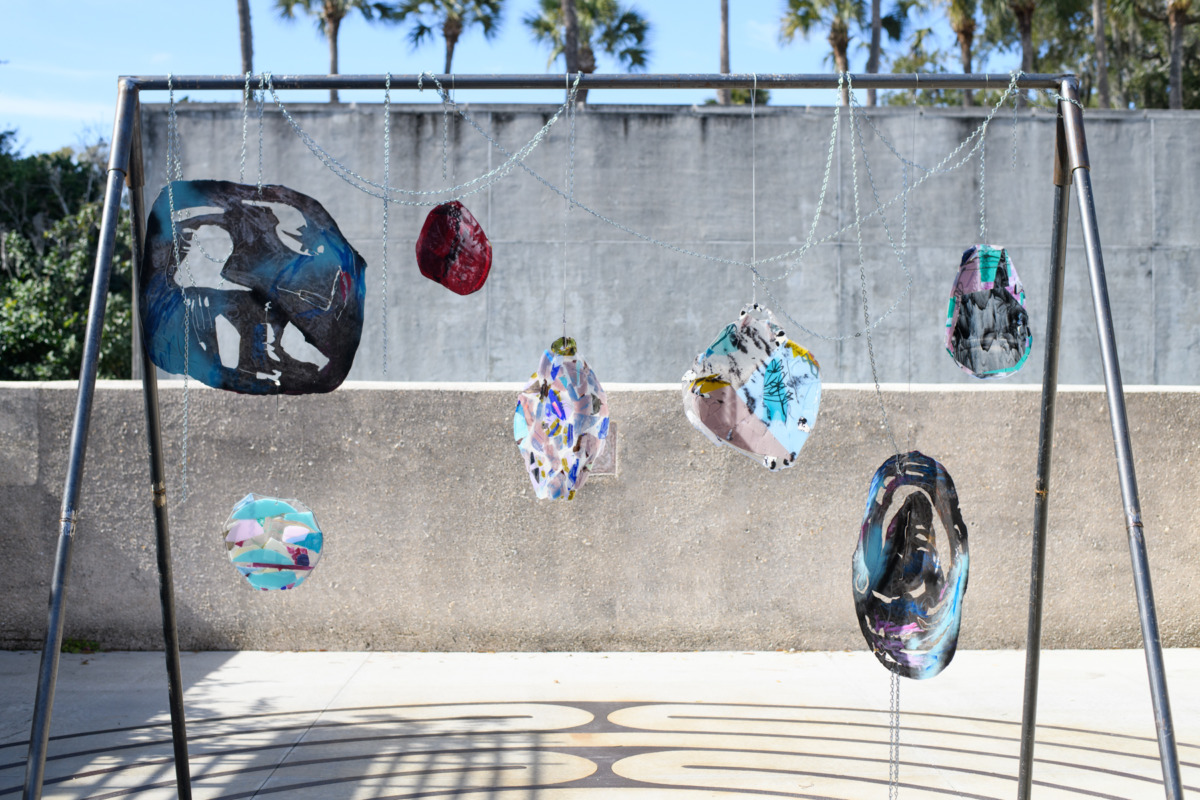
When faced with rising sea levels, record-breaking storms, warming oceans, and other doomsday precursors, the quest for improved prospects seems dire yet compelling. Jillian Mayer’s exhibition New Sincerity 2.0 contains promising revisionist outlooks with the labels “new” and “2.0.” These indicators spark curiosity about the conceptual strategies of the work, while encouraging reflection on the central tie of genuine sincerity.
Mayer is a Miami-based multi-disciplinary artist who confronts the implications of climate precarity with probing inquiry balanced by dry wit and a playful attitude. The conceptual undercurrents of her work explore humanity’s dependency on technology, its affects on our expression of true self, and the collective reckoning of a collapsing future. Through recent material explorations, an increased vocabulary of found objects, and continued studies of emergent, chimeric forms, Mayer considers whether art, especially in its physical form, can survive post-apocalyptic futures. New Sincerity 2.0 weighs the contrasting impacts of digital space versus physical objecthood. The exhibition examines the existence of truthfulness in augmentation, and what variations may come from an endless loop of mutation and amalgamation.
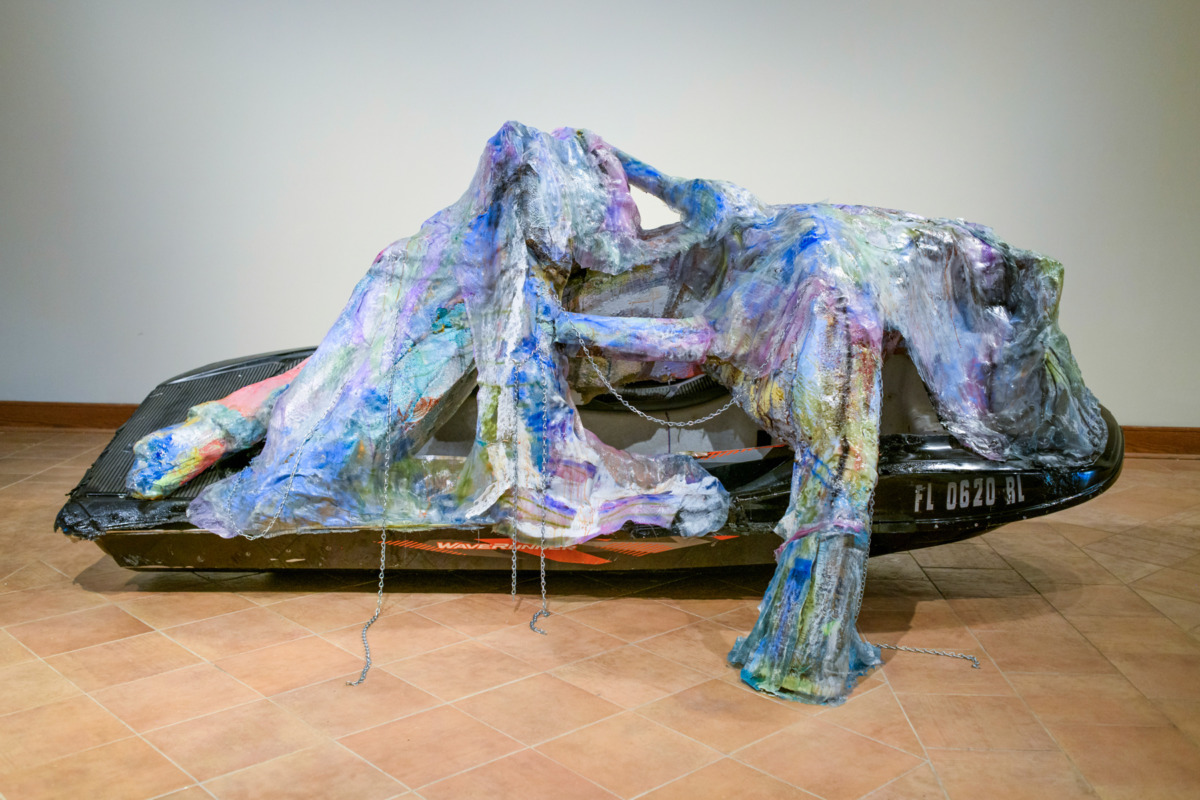
A draped and suspended chain functions as a recurring motif in Mayer’s physical objects. As readymade objects, the chains imbue a false sense of security, in the same way that devices provide users with a sense of control and connection. The chain also simulates jewelry as an adornment, or an umbilical cord coupling elements. This tethering creates a connection between two larger sculptural masses, like a parent and a spawn, or a hull and a weighted anchor. Other found objects featured in Mayer’s works include outdated recreational equipment, a hint at the uncanny overlap of leisure activities and Doomsday prepper subculture. Mayer utilizes versatile materials, including resin, silicon, foam, fiberglass, and enamel, elements found in a range of commercial applications. The surfaces of her sculptures appear viscous, viral, and ladened. The collection of awkward, bulging, and emergent forms seem especially motionless paired next to the artist’s video work.
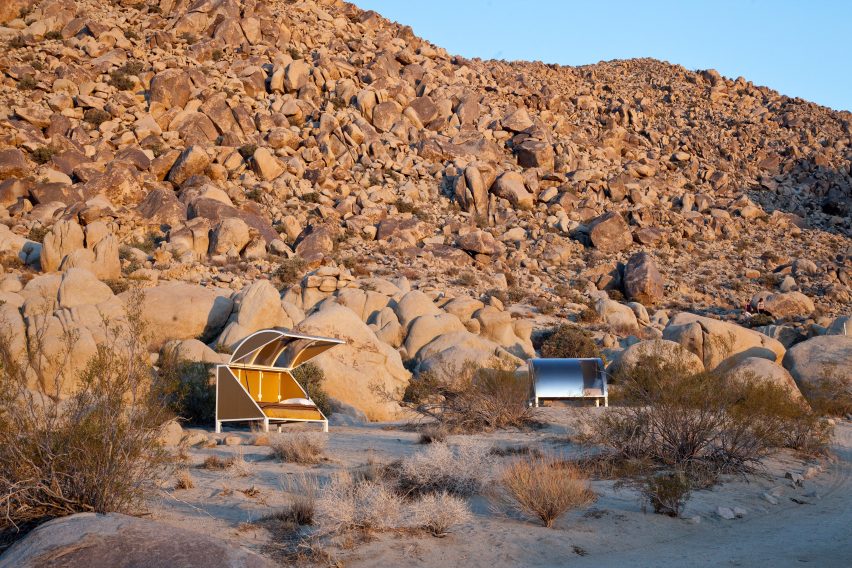
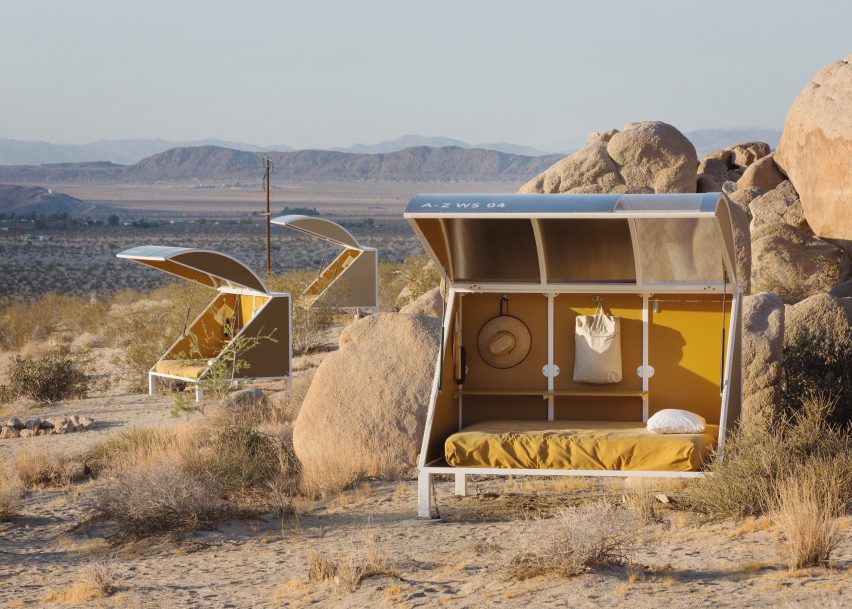

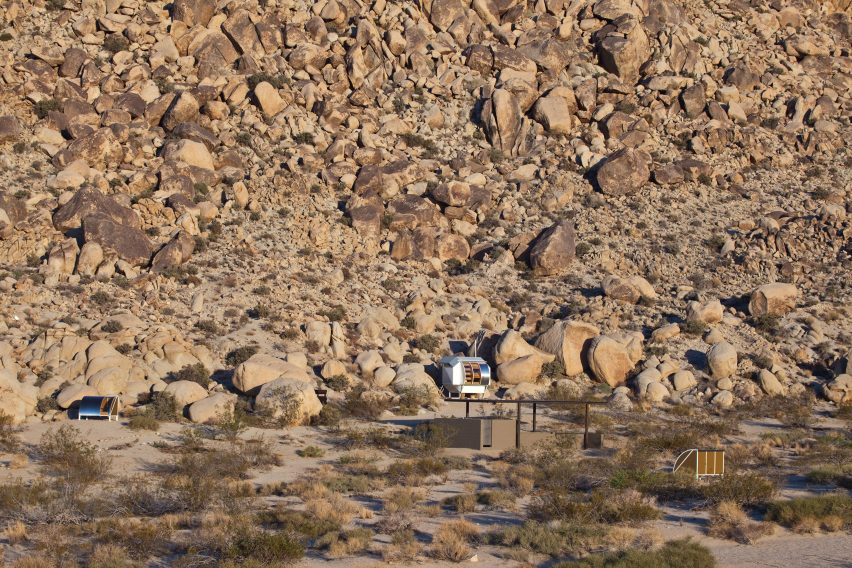
Mayer’s landscape-like, Bencher (2022); humanoid, anthropomorphic forms, Pierced Ceramic Friend Group (2020); and the found object-based works of Solar Powered ATV Sculpture (2022) and Jet Ski Sculpture (2022), along with the video components of Human Nature (2020) and The Dilemma (2022) align with work made in the wake of post-modernism, like that of Michael E. Smith, Lucy McRae, Andrea Zittel, or Fabian Marcaccio. Here, post-internet art is labeled “digi-modernism” or “metamodernism,” describing work that reflects on the impact of capitalist consumer production and technology on human interaction, expression, and innovation. This era has a fascination with retro reboots, spinoffs, and generations (as evidenced by most serial based entertainment and pocket-sized devices, see iPhone). The sculptural and video work in Mayer’s “2.0” version aligns with this methodology, but the title is also a nod to possible improvements on previous formats, evolving for higher potency, revision for revision’s sake, or even survival mode features. In contrast, the glass-based works, Indoor Window (2022) and Glass Hanging Structure (2022), introduce kiln-slumped glass, a material so clearly defined by its materiality, that the works seem removed from the exhibition’s apocalyptic 2.0 myth. Instead, the works are firmly grounded in what could be a lapse of modernism through technique, and formal devices of color, composition, pattern and shape. The glass material feels less transformed, defined by a specific process, where its inherent qualities of transparency, reflectivity, and sleekness lean the work towards a modernist outlook that the material and form are the “reality” as experienced through colorful, organized abstraction.
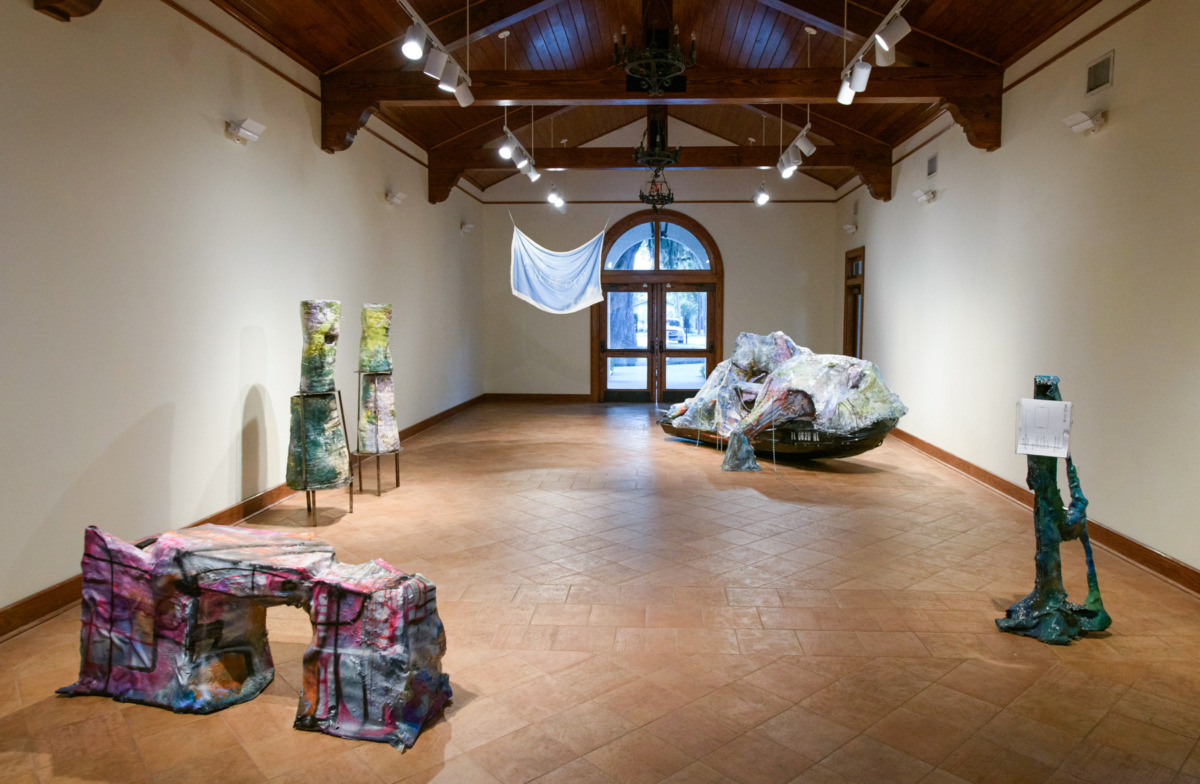
Together, Mayer’s work engages the viewer to question: what will come from our human pursuits in the wake of environmental collapse? What are the limits of adaptation and advancement? What is sincerity in an age of filters and avatars? Can identity be spontaneously invented in an age of daily documentation? As we look towards the promise of the “new” and 2.0 versions of our future, can we create what we actually need, or will our desires fuel misguided efforts? Let’s learn from the pursuit.

